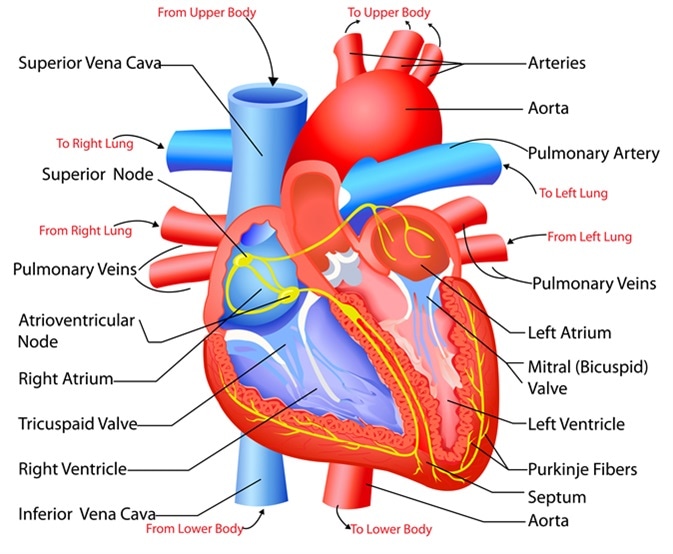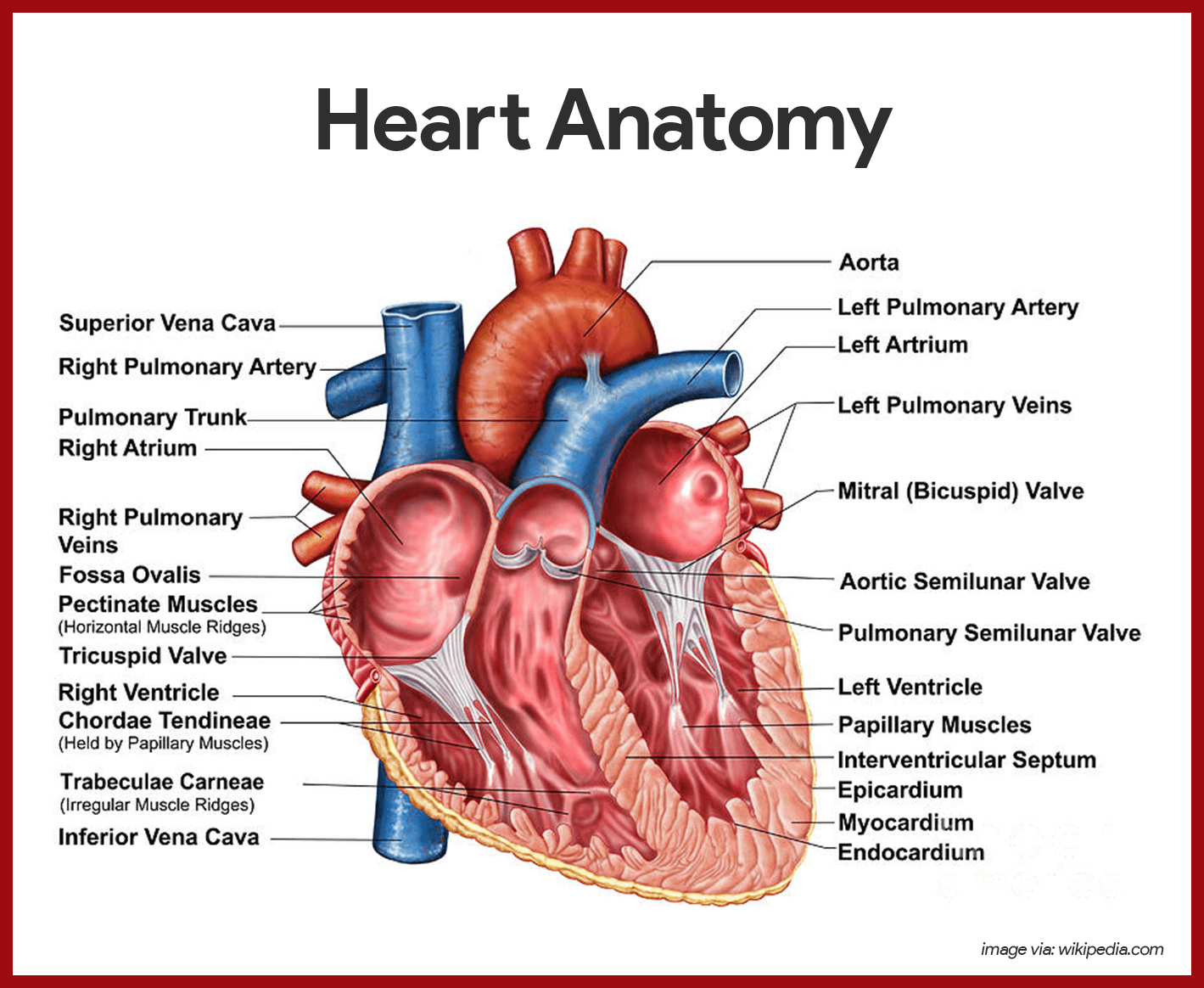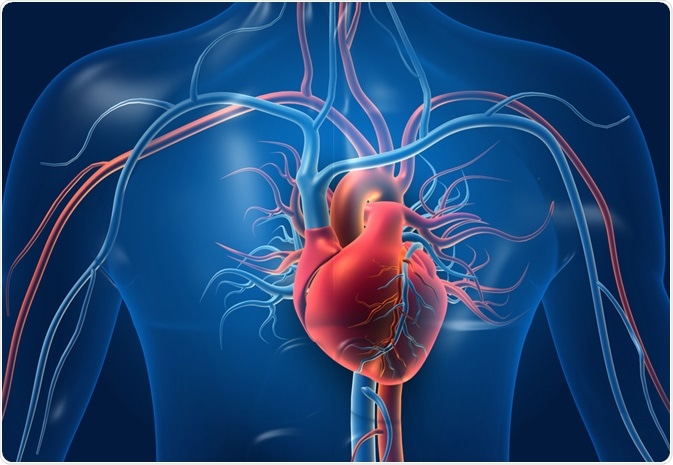How to Describe the Heart's System Only Using 10 Facts
Conduction system of the heartThe physiological pacemaker of the heart is the sinuatrial node placed in the right atrium near the superior vena cava. The heart is an organ about the size of your fist that pumps blood through your body.

Structure And Function Of The Heart
Approximately 2000 gallons of blood your heart pumps each day and can be considered as one of the amazing facts about the heart.

. Fact NO -1. The left ventricle is the major pumping chamber on the lower left side of the heart that ejects blood into the systemic circuit via the aorta and receives blood from the left atrium. Although both ventricles pump the same volume of blood the right is one-third as thick as the left.
Epicardium myocardium and endocardium. The hearts electrical signal is produced by a tiny structure known as the sinus node which is located in the upper portion of the right atrium. The heart is the main organ of the cardiovascular system.
The average size of an adult heart is the size of our two hands clasped together and a childs heart is about the size of a fist. The heart circulates blood to the lungs and back in just 6 seconds. And while a womans heart beats faster 8 more beats per minute it weighs 2-ounces less at approximately 8-ounces in total.
One chamber is on the top and one chamber is on the bottom. The function of the heart is to pump blood. Your heart is at the center of your circulatory system.
The heart is divided into four chambers. The heart pumps blood with a rhythm determined by a. 24 fun facts about the heart.
Interesting Facts about the Heart. Located in the interatrial septum the AV node conducts. It is made up of multiple layers of tissue.
Your heart will beat about 115000 times each day. The right and left atrium and the right and left. This system is a network of blood vessels such as arteries veins and capillaries that carries blood to and from all areas of your body.
The opening and closing of the valves of the heart make the beating sound. There are two chambers on each side of the heart. The two chambers on top are called the atria say.
The average heart is the size of a fist in an adult. Your heart pumps about 2000 gallons of. Fact NO -2.
The heart has four valves to ensure that blood only flows in one direction. The average male heart weighs around 280 to 340 grams 10 to 12 ounces. This is between the left ventricle and the aorta.
The heart is made up of four different blood-filled areas and each of these areas is called a chamber. In females it weighs around 230 to 280 grams 8 to 10 ounces. The atria are the chambers that fill with the blood.
The right ventricle is the major pumping chamber on the lower right side of the heart that ejects blood. One of the facts about the heart is that the size of an adult fist or two hands clasped together is the size of an average heart. About 115000 times a day your heart will beat.
The heart supplies oxygen and nutrients to the bodys approximately 75 trillion cells. One of the primary pumping chambers of the heart located in the lower portion of the heart. The wall of the heart is made up of three layers.
A human heart beats about 115000 times each day pumps about 2000 gallons of blood every day. The heart is enclosed in a protective sac the pericardium which also contains a small amount of fluid. The sinuatrial and atrioventricular nodes are connected through the internodal conduction pathways providing fast action potentials transmission.
If youre talking only about one call it an atrium. But thats not all. An adult heart beats about 60 to 100 times per minute and newborn babies heart beats at a faster pace than an adult which is about 90 to 190 beats per minute.
The corneas located in the eyes have the only cells in the body that do not need to be nourished by the blood. The left atrium receives oxygenated blood while the right receives deoxygenated blood. The atrium makes up the hearts upper chambers where blood enters.
According to research from WebMD the average healthy male heart weighs in at roughly 10-ounces. About 20 percent goes to the brain and nervous system 22 percent to the kidneys and the heart only keeps 5 percent for itself. The anatomy of the hearts chambers and valves includes two atria at the top of the heart with two ventricles at the bottom.
The ventricles make up the hearts lower chambers which keep blood flowing throughout our bodies. Blood Circulates in Record Time.

Cardiovascular System Anatomy And Physiology Study Guide For Nurses


Comments
Post a Comment